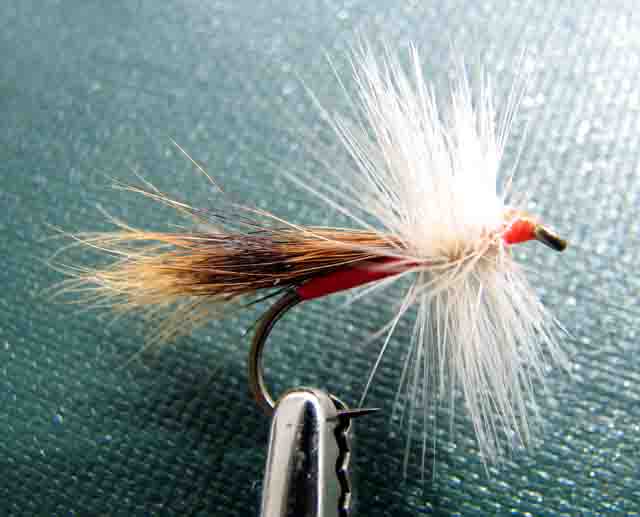Welcome to River Magic
Stillwater Slim on the Line ... June 9, 2009
|
|
Low-Water Salmon Angling – The Secret
Achieving consistent success as a salmon angler isn’t easy. Like any worthwhile challenge, considerable study and practice are required. Knowledge, skill, patience and success slowly help to develop our confidence, the most important quality an angler can acquire. Confidence, backed by knowledge, skill and experience, is what turns a novice into an expert. Although this may sound like a long and tedious path, it is filled with pleasure and satisfaction that far outweighs the occasional frustrating moments. Frustration is merely a confirmation of the need for more exploration and study, and that joyous journey never ends.
An expert can analyse any angling situation and develop a plan for success, or a series of backup plans where success is elusive. For example, the successful angler first has to find fish that can be caught, then figure out how and when to catch them. Often, recall of similar past experiences can help a seasoned expert immeasurably.
My greatest angling hurdle was low-water salmon fishing. Years of frustration without any success led me to reject fishing when water was low and warm. Instead, I’d go to the beach or a music festival and try to put fishing out of mind. Once, during a hot and dry vacation at Cumminger’s Pool on the West River St. Mary’s, my best friend, the late Bill Strople, told me a valuable secret. That secret concerns water temperature.
Bill’s strategy was simple. He would rise very early in the morning and check his outdoor thermometer. If the air had cooled sufficiently overnight, then so had the water. It was very important to fish early, before the sun warmed the water. This was Bill’s requirement for productive low-water fishing. Fly pattern wasn’t really important, but a small White Hackle MacIntosh usually produced some action. There are other valuable low-water techniques, but determining water temperature is critical.
Some of these other low-water tricks involve using a very long and fine leader, very small flies, a retrieve consisting of very fast, short jerks (we used to call it the low-water shuffle), keeping casting delicate and to a minimum to avoid “beating the fish down”, and avoiding any unnecessary wading disturbance. It’s fair to say that a large percentage of fish hooked in this way are lost, but it sure is a lot of fun. Thanks to Bill’s advice I found a new appreciation for low-water angling and I now feel confident in my ability to be successful. You can too, but remember to look skyward and say, “Thank you, Bill Strople”.
DFO’s Red Herring
DFO scientists and managers are fixated on the notion that fish caught and released in warm water have a significantly reduced chance of survival. This belief arose from their assessments involving seining of adult salmon in warm waters that did result in some fish being killed, so they now require that the water be 14 degrees Celsius, or less, for seining, which makes sense. What doesn’t make sense is their assumption that fish caught and released by angling suffer a similar fate as seined fish. After all, if we can’t hook them in warm, low water, and I never did despite years of trying, we can’t harm them.
Regardless, DFO has spread the notion that warm water catch-and-release angling kills fish to First Nations people and other conservation groups to a point that it is generally accepted as a fact. That’s why the St. Mary’s River has only a six-week salmon angling season. But, we all ignore the fact that fish are preoccupied with survival under these conditions and are not at all inclined to take a fly. If we can’t catch them in warm water, why the worry?
Bill Strople would see this as a red herring. I agree.
White Hackle MacIntosh
The White Hackle is a colour variation of the legendary Deadly MacIntosh dry fly by Dan MacIntosh, St. Mary’s River Guide. Other variations popular on the St. Mary’s were the Orange Blossom, Golden MacIntosh, and Pink Lady.
Thread: Black or red 8/0 UniThread Hook: Dry fly hook such as Mustad 94840, in sizes 2, 4, 6, 8, or 10 Tail: Red or wine floss, polypropylene, or UniStretch (for small sizes) Body: Same as tail Rib: Oval silver tinsel (optional) Wing: Pine squirrel tail Hackle White or cream cock saddle hackle Head: Black or red thread with 2 coats of glossy finish such as Angler’s Corner Wet Head Cement.
Please stay on the line … |
